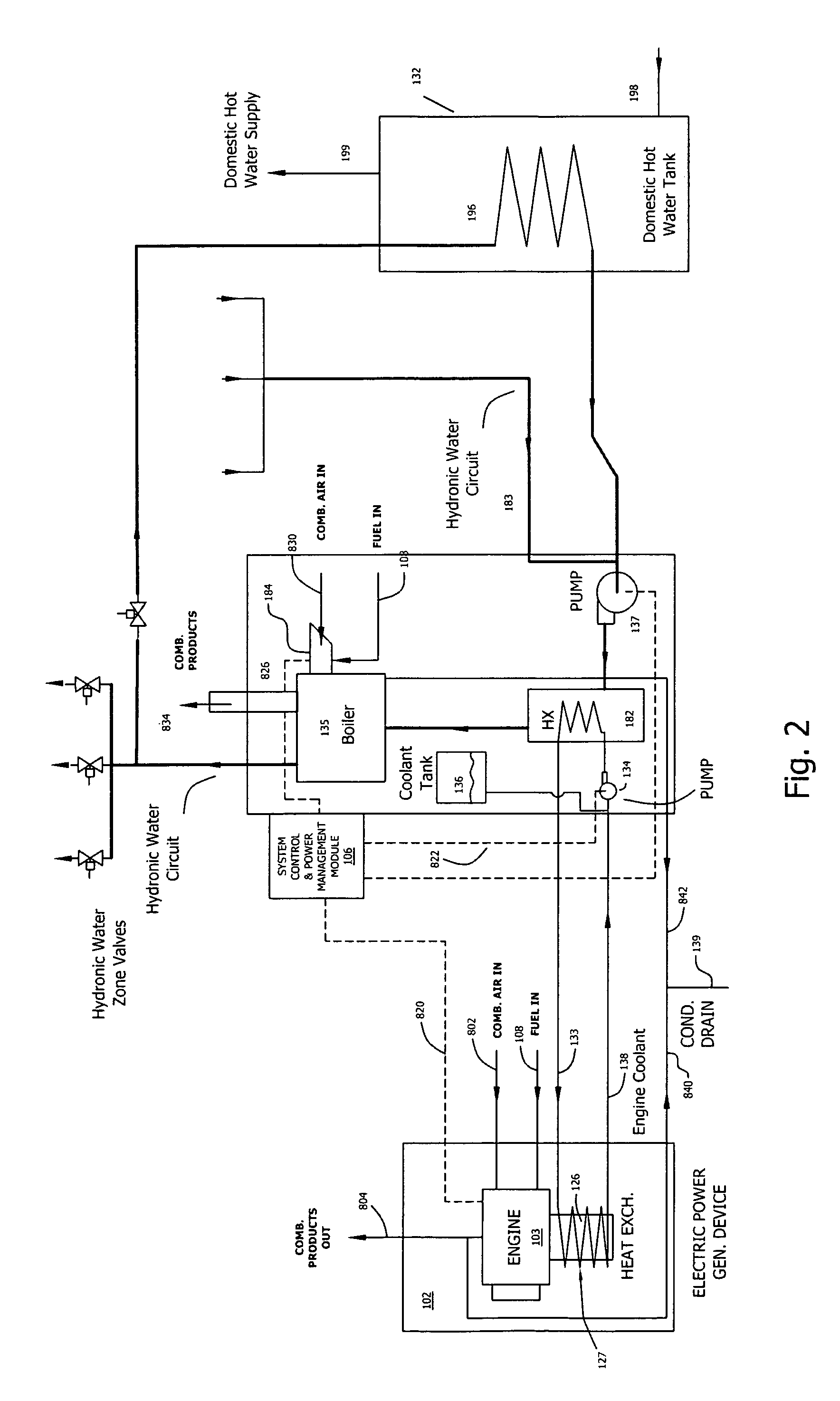System and method for hydronic space heating with electrical power generation
a hydronic space heating and electrical power generation technology, applied in the field of cogeneration of space/water heat and electrical power, can solve the problems of large fraction of fuel energy normally dispersed as waste heat, no widespread use of small-scale cogeneration, and little attention to how such small-scale power generation technologies could be practically integrated, so as to maximize the run time, minimize the starting and stopping of the electric generator, and maximize the effect of electric power
- Summary
- Abstract
- Description
- Claims
- Application Information
AI Technical Summary
Benefits of technology
Problems solved by technology
Method used
Image
Examples
Embodiment Construction
[0020]FIG. 1 illustrates a hydronic heating micro-CHP system installed in a typical North American residential application according to an embodiment of this invention. This system is related to that described in the incorporated-by-reference U.S. patent application Ser. No. 10 / 704,358, which was filed on Nov. 7, 2003, by Eric C, Guyer for a SYSTEM AND METHOD FOR WARM AIR SPACE HEATING WITH ELECTRICAL POWER GENERATION. Unless different elements and methods are described, it can be assumed, where appropriate that elements and methods described in the above incorporated-by-reference U.S. patent application Ser. No. 10 / 704,358 can be employed in connection with the teachings of this invention.
[0021]FIG. 1 is best understood by recognition that there are three separate liquid fluid circuits in the system. Briefly, these are the “engine coolant” circuit, the “hydronic water” circuit, and the “domestic (potable) hot water” circuit. For clarity, the terms, “engine coolant,”“hydronic water,...
PUM
 Login to View More
Login to View More Abstract
Description
Claims
Application Information
 Login to View More
Login to View More - R&D
- Intellectual Property
- Life Sciences
- Materials
- Tech Scout
- Unparalleled Data Quality
- Higher Quality Content
- 60% Fewer Hallucinations
Browse by: Latest US Patents, China's latest patents, Technical Efficacy Thesaurus, Application Domain, Technology Topic, Popular Technical Reports.
© 2025 PatSnap. All rights reserved.Legal|Privacy policy|Modern Slavery Act Transparency Statement|Sitemap|About US| Contact US: help@patsnap.com



